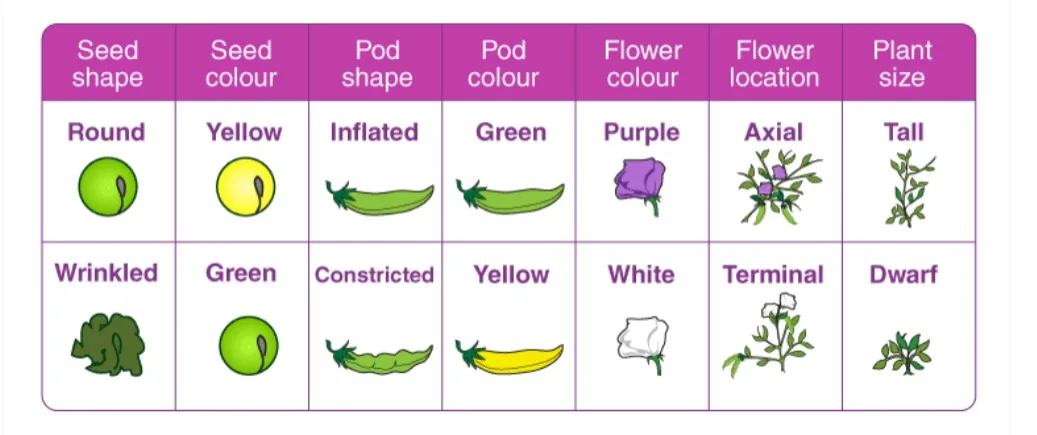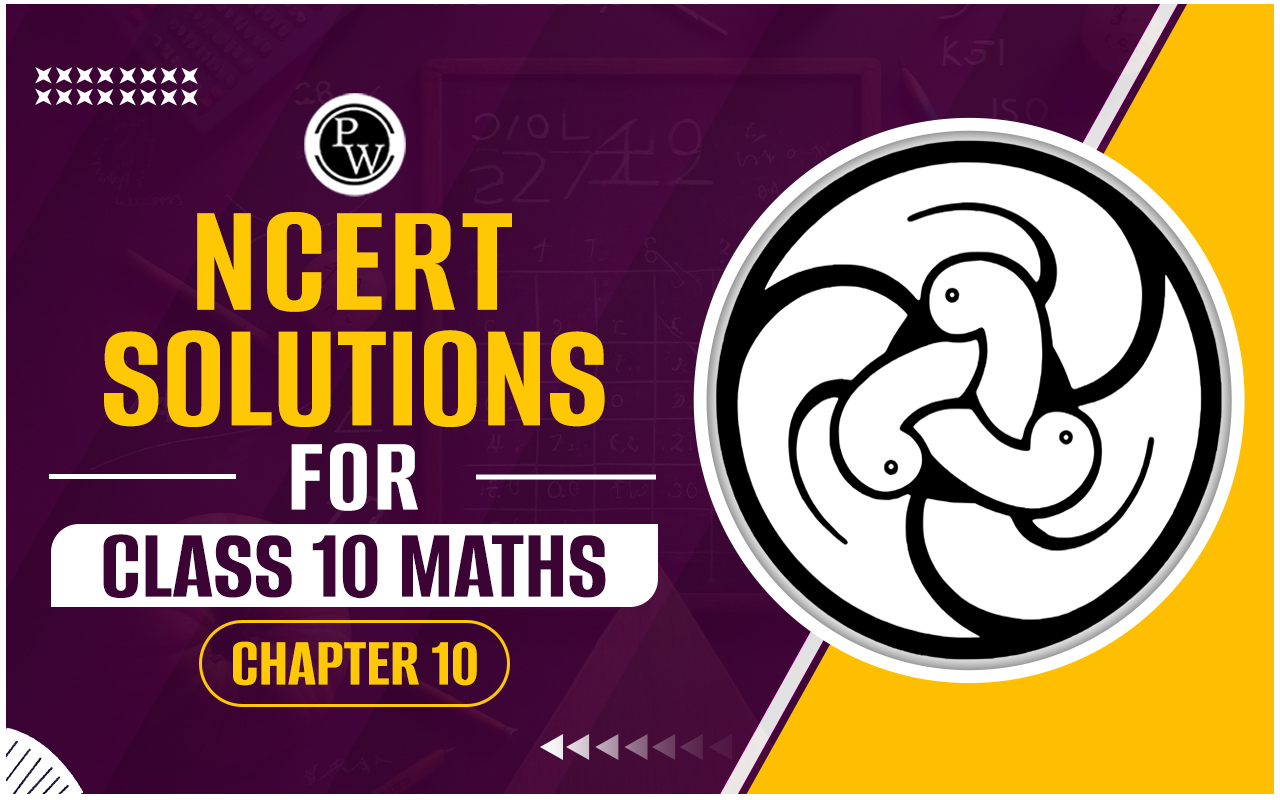

CBSE Class 10 Science Notes Chapter 9 Overview
The term "heredity" describes the traits that are passed down from one generation to the next. The process through which a rudimentary living form gradually gives rise to complex species over several generations is known as evolution. This chapter will cover the process by which variations arise, the laws of heredity that dictate their inheritance pattern, and how the accumulation of these variants results in evolution.CBSE Class 10 Science Notes Chapter 9 PDF
Students in CBSE Class 10 can prepare more efficiently and effectively for their Science exams by using our revision notes. This page contains the short notes for CBSE Class 10 Science Chapter 8 Heredity and Evolution.CBSE Class 10 Science Notes Chapter 9 PDF
CBSE Class 10 Science Notes Chapter 9
Heredity
Hereditary features are passed down from one generation to the next. The functional components of heredity that pass traits from parents to children are called genes. Genes are little segments of DNA that code for particular RNA or proteins. The area of biology known as genetics studies genes, inheritance, and variations.Sexual Reproduction
A man and a female are the two persons involved in the reproductive mode. They generate gametes, or sex cells, which combine to create a new organism.Genes
The functional unit of heredity is the gene. In living things, each gene regulates one or more specific defining traits.Mendel’s Work
The "Father of Genetics," Gregor Johann Mendel, was an Austrian monk who studied pea plants to comprehend the idea of heredity. The field of contemporary genetics was founded by his research. The Law of Dominance, the Law of Segregation, and the Law of Independent Assortment are the three fundamental laws of inheritance that he created.
Dominant Traits
Dominant qualities are those that manifest themselves in an organism in all conceivable configurations and are visible. We may observe from Mendel's experiment that in pea plants, the tall trait tends to express more than the short phenotype. As a result, the taller feature of the plant is considered to be more prominent than the shorter one.Recessive Traits
Recessive traits are those that do not manifest when a dominant allele is present. Therefore, when a dominant allele is present, a recessive trait or characteristic is present in the organism but is not visible.Monohybrid Cross
A monohybrid cross is one in which two organisms are crossed while just one character is taken into account. The monohybrid ratio is the proportion of characteristics that result from this cross at the F2 generation. For example, after the F2 generation, we receive 3 tall:1 small plants if a tall plant (TT) is crossed with a dwarf plant (tt). Thus, a monohybrid ratio is 3:1. In this case, one plant's height is taken into account at a time.Dihybrid cross
A dihybrid cross occurs when two organisms are crossed while taking into account two characters. The dihybrid ratio is the proportion of characteristics that result from this cross at the F2 generation. For example, if a plant that produces round, green peas is crossed with a plant that produces wrinkled, yellow peas, the resultant plants would all produce round, green peas. If the same were crossed for an F2 generation, we would see four-character combinations in a 9:3:3:1 ratio. Consequently, the dihybrid ratio is 9:3:3:1.Laws of Mendel
According to the Law of Dominance, a gene contains two opposing alleles, of which one manifests itself in the organism consistently. It is expressed in every conceivable combination and is known as the dominant gene. The Law of Segregation states that throughout gamete production, characteristics segregate without any allele mixing. The Law of Independent Assortment states that during gamete production, characteristics can segregate independently of various attributes.Sex Determination
Sex determination is the process of identifying a person's sex based on the makeup of their genetic makeup. Different elements determine an embryo's sex in different animals. When it comes to humans, sex is determined by whether or not the Y chromosome is present. XY is a man, whereas XX is a woman. An X chromosome is present in every ovum. An ovum produces a male offspring when it fuses with sperm that contains Y, and a female child when it fuses with sperm that contains X.Traits
An organism's traits are its defining characteristics, which can be seen in its physiological makeup or their outward appearance.Acquired Characters
Acquired qualities are those that an organism develops throughout its existence. The following generation does not inherit these traits if they are not incorporated into the DNA of germ cells. For instance, starvation-induced muscle atrophy and weight loss, injury-induced loss of limbs or tails, etc.Inherited Characters
Inherited characters are characteristics that are passed down from parents. These characteristics are always passed down to the following generation, albeit they may or may not manifest themselves based on dominance or recessiveness. Height, skin tone, and eye color are a few examples.Variation
The difference between members of the same species is measured by variation. Children are not exactly like their parents; there are differences. Within a population, every individual is unique. Variations are mostly caused by recombination and mutation. Individuals of a species that reproduce sexually vary greatly from one another, and the gradual accumulation of these differences is a major factor in evolution. One of the main forces behind evolutionary processes is the selection of variations by environmental influences.Genetic Variations
Genetic variants are the discrepancies in DNA sequences seen in all organisms that result in a diversified gene pool. Different/varied physical characteristics or metabolic pathways result from these changes.Natural Selection
It is the process by which a species' advantageous characteristic is chosen in a population. All of the current species are under equal pressure from changing environmental conditions. Natural selection favors those species and organisms that can adapt to changing conditions, and those that are unable to do so perish, being rejected by the natural world.Speciation
Genetic Drift
The features that endure in a population can be determined in large part by natural selection. On the other hand, random oscillations in gene variations are frequently observed. We refer to this phenomenon as genetic drift. Therefore, a shift in an allele's frequency within a small population is known as genetic drift. A gene variant may vanish from the population due to genetic drift, which would decrease genetic variation.Evolution and Fossils
Evolution
Evolution is the observable shift over numerous generations in a population's heritable traits. These alterations may result in the emergence of a new species or cause an existing species to alter to better suit its new home.Origin of Species
Following a triumphant journey aboard HMS Beagle, Charles Darwin penned a book detailing his observations made on the Galapagos Islands. He penned a thorough theory of evolution, primarily based on natural selection, in the book The Origin of Species.Evolutionary Relationships
Analogous and homologous organ studies can be used to infer an animal's evolutionary relationships. Organs classified as homologous have a similar structure but a distinct function. Although the forelimbs of mammals and birds have comparable anatomy, their functions are distinct. Both the pea plant's tendril and the barberry plant's spine are modified leaves, yet they serve distinct purposes. Organs that operate similarly yet differ in terms of their origin and structure are called analogous organs. Bat, bird, and insect wings are all utilized for flight, yet they differ greatly in structure. Both opuntia and peepal leaves are used for photosynthesis; however, opuntia leaves are modified stems, whereas peepal leaves are regular leaves.Human Evolution
It is recognized that humans are members of the ape family. Chimpanzees and other primates have a relatively close genetic ancestor with modern humans. A more comprehensive picture of human evolution has been constructed, even though the exact process by which humans evolved from primates is still unknown. Dryopithecus, Ramapithecus, Australopithecus, Homo erectus, Homo sapiens neanderthalensis, Cro-magnon man, and ultimately us, Homo sapiens, are some of the predecessors of modern humans. The origins of human evolution are in Africa. They then dispersed over the globe.Benefits of CBSE Class 10 Science Notes Chapter 9
These review notes for Class 10 Science students have been developed by knowledgeable subject matter specialists. Every chapter is covered in detail in the notes, and they do so clearly and thoroughly. To guarantee that students can readily understand the material, the specialists have covered every topic in clear, concise detail.CBSE Class 10 Science Notes Chapter 9 FAQs
Which is the toughest class 10 science chapter?
The toughest chapter in Class 10 Science varies for different students, but topics like Chemical Reactions and Equations, Human Eye and the Colourful World, and Electricity are often perceived as challenging due to their complex concepts and calculations.
Is 10th science tough?
No, The level of questions are medium to difficult.
Which subject is hardest?
Chemistry. Chemistry is often considered one of the hardest science classes in high school. It involves abstract ideas, challenging formulas, and requires a high level of lab precision.
🔥 Trending Blogs
Talk to a counsellorHave doubts? Our support team will be happy to assist you!

Free Learning Resources
PW Books
Notes (Class 10-12)
PW Study Materials
Notes (Class 6-9)
Ncert Solutions
Govt Exams
Class 6th to 12th Online Courses
Govt Job Exams Courses
UPSC Coaching
Defence Exam Coaching
Gate Exam Coaching
Other Exams
Know about Physics Wallah
Physics Wallah is an Indian edtech platform that provides accessible & comprehensive learning experiences to students from Class 6th to postgraduate level. We also provide extensive NCERT solutions, sample paper, NEET, JEE Mains, BITSAT previous year papers & more such resources to students. Physics Wallah also caters to over 3.5 million registered students and over 78 lakh+ Youtube subscribers with 4.8 rating on its app.
We Stand Out because
We provide students with intensive courses with India’s qualified & experienced faculties & mentors. PW strives to make the learning experience comprehensive and accessible for students of all sections of society. We believe in empowering every single student who couldn't dream of a good career in engineering and medical field earlier.
Our Key Focus Areas
Physics Wallah's main focus is to make the learning experience as economical as possible for all students. With our affordable courses like Lakshya, Udaan and Arjuna and many others, we have been able to provide a platform for lakhs of aspirants. From providing Chemistry, Maths, Physics formula to giving e-books of eminent authors like RD Sharma, RS Aggarwal and Lakhmir Singh, PW focuses on every single student's need for preparation.
What Makes Us Different
Physics Wallah strives to develop a comprehensive pedagogical structure for students, where they get a state-of-the-art learning experience with study material and resources. Apart from catering students preparing for JEE Mains and NEET, PW also provides study material for each state board like Uttar Pradesh, Bihar, and others
Copyright © 2025 Physicswallah Limited All rights reserved.
Get App











